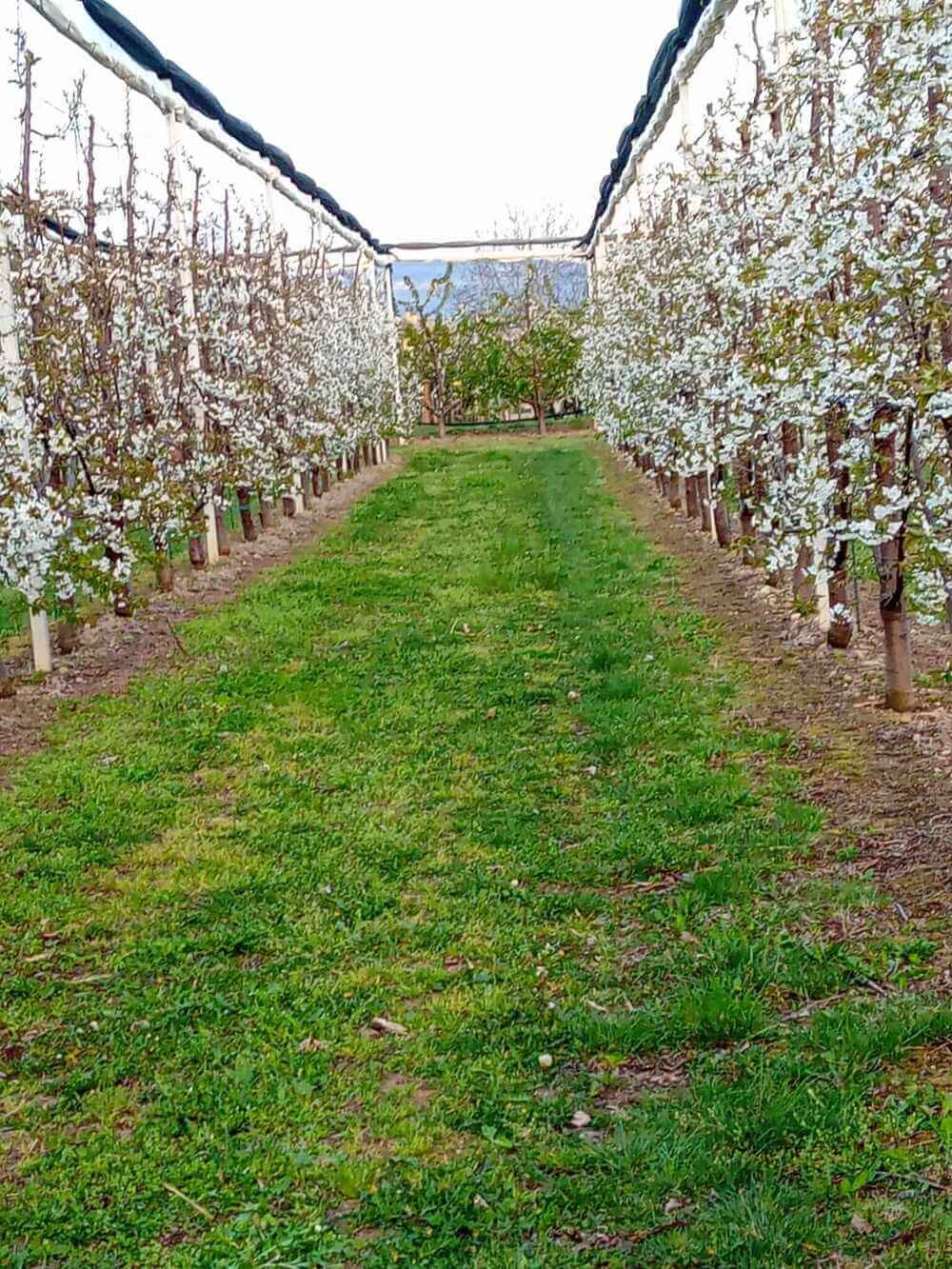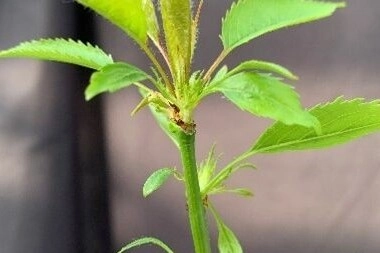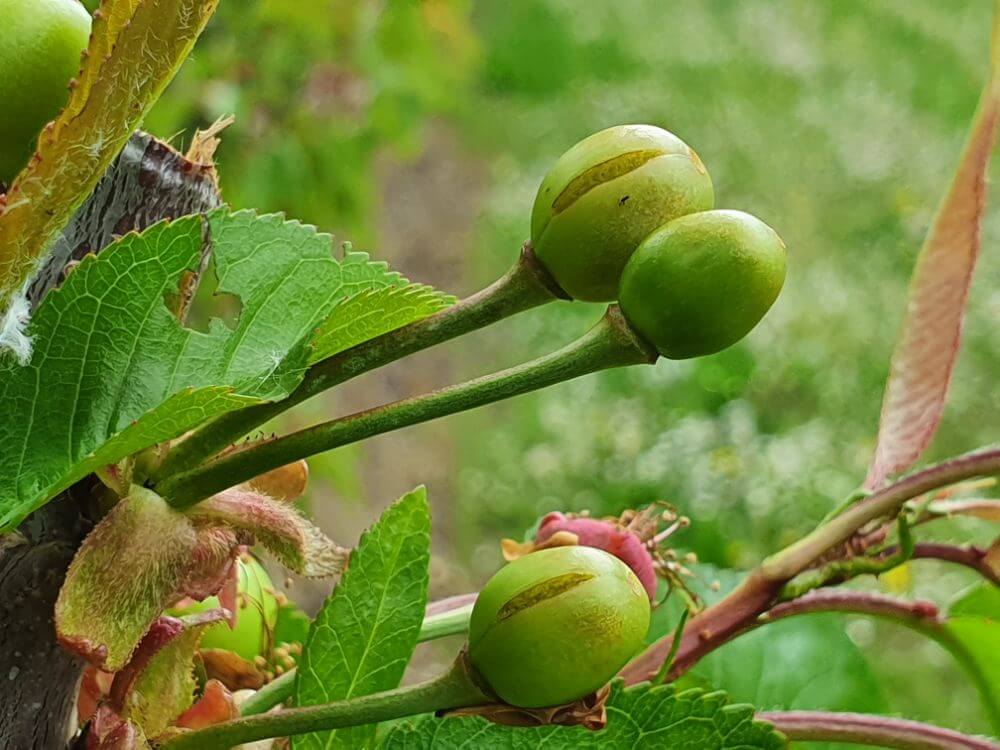The Boni Silvano and Ezio farm is a family-run business located in the municipality of Affi (Verona, Italy), near Lake Garda. The 22-hectare farm is managed by the two cousins Ezio and Silvano, who among the various crops have 5 hectares of cherry production, divided between early, medium and late varieties, with a production exceeding 40 tonnes per year.
How did the company's cherry production come about?
"We can say that the farm has always been cherry-growing. My father used to plant cherries at the edge of the land, where it was more difficult to plant vines. It wasn't much, but at least it made it possible to cover the first costs during the harvest period. Then, in 1985, the first planting of 6000 metres was planned and completed. We also wanted to focus more on cherries".
"The real turning point actually came 17 years ago, in 2006, when on the recommendation of Dr. Gino Bassi, who was in charge of the fruit-growing sector in Verona, together with other cherry growers in the area we were invited to go on a tour of cherry orchards in the area and in other regions, especially those in Trentino. This gave us a great stimulus to continue growing cherries.".
 Ezio Boni
Ezio Boni
As far as the planting systems are concerned, what type have you adopted? Are we talking about a fully covered crop?
"Years after the first planting, two more were born: the first was spindle-shaped, the others we decided to make palm-shaped. This allows more exposure to the sun, not only of the fruit but also of the buds for fruiting the following year. This is because exposure to the sun is important for the buds, which often risk perishing on some varieties".
"For the first planting, a fairly modern structure had already been set up, including hail covers. After attending one of the Cherry Symposiums in Vignola, under the advice of Stefano Lugli, we integrated rain nets into part of the planting. That year in particular there had been a lot of rain in the ripening phase".
"In addition, we were also worried because in our area, near Lake Garda, we often have breezes or problems with the wind. That is why we chose to use an elasticised system in which the nets are tensioned. In this way the nets have the possibility to swing and do not cause damage even on the windiest days".
"Moreover, as there is often a breeze, when the sheets are pulled they move slightly and also allow a considerable exchange of air. Probably, more rigid systems would have caused more problems".

"However, I do not hide the fact that I was afraid that we would have more problems with monilia, instead, on the contrary, we never had any. The cherries do not get wet. What's more, as there is often a breeze, when the sheets are pulled they move slightly and also allow a considerable exchange of air".
"I would also add that we have insect protection netting around the entire perimeter, especially for drosophila. If the problem had only been the bug, we could also have used a net with a much thinner weave, but actually for that we have never had so many problems. At least this allows us to do fewer treatments than with uncovered plants, which is no small thing."
"All the plants are on Gisela 6 rootstocks. The only variety that has a different rootstock is Sweet Aryana, which is on Colt. Producing so much and being self-fertile, we risked having a small calibre production. With a more vigorous rootstock, on the other hand, production should be better".
"Finally, a small part of the plants is neither protected nor covered. This comes from our own experimentation to put the different varieties to the test of weather and climate".

What choices have been made at the varietal level?
"In the first planting, the variety range of the time was chosen and planted: we are therefore talking about Grace Star, Early Star, Black Star and also the late varieties Kordia and Regina. The latter under cover have a better hold in the plant, so harvesting even a few days later does not make much difference. This year, too, we harvested them all after picking the uncovered parts of the plant".
"Of these varieties mentioned, the one that I think is most interesting and should still be taken into consideration is Grace Star. It is still a very good variety even though it is a slightly tender cherry: we are talking about a really good production with very good sizes".
"In the later plantings we relied instead on Sweet varieties: we are talking about varieties like Sweet Aryana, Sweet Lorenz, Sweet Stephany and Sweet Saretta, together with a few Samba plants. As far as we are concerned, the latter was a somewhat unknown variety, but I have to say that it gives a lot of satisfaction and, fortunately, hardly has any cracking problems".
"Kordia also gives very few problems with cracking, but this year, also due to the very critical season, we experienced a low production, approx. 9 kg per plant, even though the size was all 32+. We must say, however, that it does not detract from the Sweet varieties".

"For example, Sweet Stephany is a very good variety. We only have two rows of it. Last year I have to say that I was not particularly enthusiastic about it. This year, on the other hand, I must say that we have been very satisfied. Good size, very good quality and abundant production".
"Although, honestly, the variety that gave us the most satisfaction this year was Sweet Saretta. We are talking about really high caliber, but above all, we experienced high production. In spite of the season, we did not even have a problem with cracking".
"And finally, we are carrying out some experiments with other varieties, specifically Henriette, of which we have only five plants, and Areko. Not only indoors but also outdoors. We are talking about promising varieties, especially for crunchiness and aesthetic value, which is superior to both Kordia and Regina".
 Henriette.
Henriette.
As far as sales are concerned, what strategies do you adopt?
"We base our sales on direct sales to the consumer. It gives us greater satisfaction, not only in economic terms, but it also gives the consumer the opportunity to touch the product, understand its quality and see for themselves how we work and how we produce the product they buy".
"Customers then come back, they are intrigued, and that is how it should be in our opinion. We are lucky to have the company in a nice tourist spot." "Last year we had a sales period of 59 days".
'If we can point out a critical issue, unfortunately, it is that in the Verona area there is not really a cooperative world. It is not a widely felt mentality. However, this weighs on those who want to work well in order to offer the product at the best possible conditions and at an adequate price. By now the cost of harvesting is at least two euros. If there was a cooperative fabric in the Veronese area, it could be better'.
Cherry Times - All rights reserved















